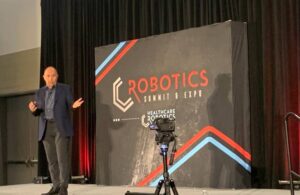
It’s been about two and a half years since Johnson & Johnson (NYSE:JNJ) unveiled its plans for a next-generation surgical robot.
At the time, the six-armed “Ottava” system generated a lot of buzz. Johnson & Johnson shared details on the surgical robotic platform set to offer unrivaled flexibility and control compared to the rest of the market. It features six arms to provide more control and flexibility in surgery, while those arms will be integrated into the operating table.
The company said its platform has a zero-footprint design to enable patient access, increase space in the operating room and improve workflow.
Over the past 30 months, though, the company remained tight-lipped over developments with the platform. In October 2021, J&J pushed back the platform’s development timeline by about two years due to multiple factors. It initially expected was to begin the verification and validation processes for Ottava in 2021. The company planned for enrollment in clinical trials for the device in 2022 to follow.
Today, at Robotics Summit & Expo, Martin Buehler, global head of robotics R&D, offered the latest — albeit brief update on Ottava.
“Stay tuned,” he said during a keynote presentation. “It’s happening.”
Buehler hoped to provide a “big reveal” on Ottava, but said the team at Johnson & Johnson “weren’t quite ready.” His suggestion to stay tuned may point to more news soon as he remains optimistic for what Ottava may bring.
“I’m super excited about the next generation of surgery,” Buehler added.

Johnson & Johnson MedTech’s head of robotics R&D has big hopes
Buehler touched on the company’s Velys and Monarch robot-assisted surgical platforms in addition to teasing Ottava.
He touted the autonomy of Velys, providing guidance and guardrails for the surgeon to ensure more predictable outcomes. However, the surgeon remains in full control of the robot, he stressed.
Monarch combines a luminal scope with robot arms, which Buehler explained emphasizes augmenting, not automating what’s possible in a traditional procedure. The surgeon commands the robot arms and uses a controller with powerful navigational aid from the platform.
Ultimately, Buehler stressed the unmet need that J&J wants to meet with its surgical robots.
“The unmet need in global healthcare is staggering. To address this need, we’d have to supply 143 million additional surgeries a year,” he said. “In short, more care is needed. More surgery is needed. All with fewer doctors. It’s going to be a challenge.
“As technologists, we want to combine areas so surgeons become flexible pilots – ‘super surgeons.’ Then surgery gets to a place where surgical outcomes are as safe, predictable and consistent as what people expect from air travel.”